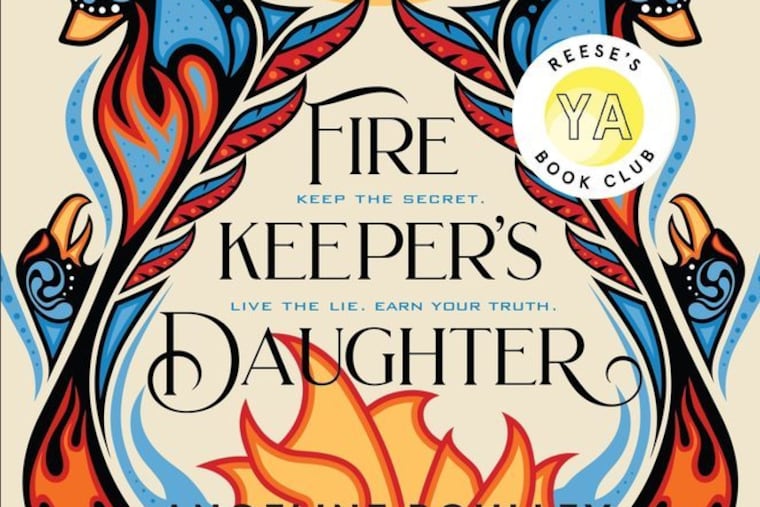‘Firekeeper’s Daughter’ is a debut YA novel and the Obamas’ pick for a Netflix series | Book review
Angeline Boulley, an enrolled member of the Sault Ste. Marie Tribe of Chippewa Indians, has found a compelling vehicle to introduce readers to experiences often invisible to non-Natives.

Firekeeper’s Daughter
By Angeline Boulley
Henry Holt, 496 pp. $18.99
Reviewed by Trisha Collopy
In Sault Ste. Marie, on Michigan’s Upper Peninsula, hockey is god, pasties are a food group, and a potent form of meth is causing a wave of deaths in and around the nearby Ojibwe reservation.
Daunis Fontaine has grown up "in the Sault," with a foot in both Anishinaabe and white worlds. Her dad was an Ojibwe hockey standout who died young, her mom the daughter of French-Italian old money who never embraced their granddaughter's Native family.
She's deferred her dream of attending the University of Michigan to take care of her mother and dying grandmother — and mourn the loss of her Uncle David, a local chemistry teacher who died under murky circumstances.
When she meets Jessie, the new hotshot on the town's elite hockey team captained by her brother, she is drawn in by his attention and his own struggle with his Native identity.
After a meth-related murder-suicide, the story takes off at a tear, with revelations and bodies piling up. Jessie turns out to be an FBI agent, working with a partner to track a spike in drug activity in Great Lakes hockey towns and reservations from Ontario to northern Minnesota.
They recruit Daunis as an informant, putting her in immediate danger as she tries to surreptitiously gather intel on her community, follow her uncle's research and clear his name, and navigate her growing entanglement with Jessie.
Debut author Angeline Boulley, an enrolled member of the Sault Ste. Marie Tribe of Chippewa Indians, takes her time setting up this world of interlocking histories and secrets, layering Daunis’ knowledge of hockey, Anishinaabe language, her love of Sugar Island, and her relationships with her extended family and tribal elders.
Boulley, whose young-adult book has already been picked up for a Netflix series by Barack and Michelle Obama’s production company, doesn’t shy away from the old-money entrenched racism from Daunis’ maternal family, and the ribbing and sometimes rejection she receives from her Anishinaabe relatives, who assume she has a protection they don’t from her family trust fund and her lighter skin.
Some of the novel's best passages are the bawdy text exchanges between Daunis and her friend Lily. "Go on!" Lily says, pushing Daunis to dance at one powwow. "It's a chance to kiss a Nishnaab you're not related to." And the razor-sharp back and forth between the elders at the tribal center. "Mmm," Lily's Granny June says of her coffee. "Dark and bitter, just like my first husband."
Boulley has found a compelling vehicle to introduce readers to an Upper Midwest experience that is often invisible to non-Natives.
She complicates the white default of the Upper Peninsula and immerses us in Anishinaabe language and culture — one that balances the new wealth of “per cap” casino payments with long-standing poverty and lack of opportunity. By the end of Firekeeper’s Daughter, readers have been plunged into an Anishinaabe world that is rooted in place and includes powerful roles for women as judges, herbalists, healers, and tribal leaders.
The elders turn out to play a crucial role in the plot, one that relies not just on their traditional knowledge, but also on their ability to learn new skills from young people who are knowledge carriers as well as recipients.
From the (Minneapolis) Star Tribune.